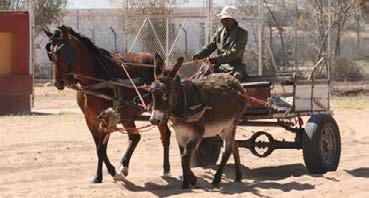
Multidimensional poverty affects more than 43% of the population

The Namibia Statistics Agency has just released its first Multidimensional Poverty Index (MPI) to serve as a tool to guide and measure policies that have in mind the broad reduction of poverty such as the successive National Development Plans and the Harambee Prosperity Plan.
Statistician General, Alex Shimuafeni stated in the first report’s Introduction that it is the result of the ongoing partnership and collaboration between the Agency, UNDP, UNFPA and UNICEF as well as other UN agencies. “We will forever remain thankful to these partners and the entire stakeholders in our quest to provide data and statistics for the development of Namibia,” he said.
The agency developed the capacity and skill to compile the MPI report with the assistance of the Oxford Poverty and Human Development Initiative (OPHI).
According to the first report’s Executive Summary, the MPI is a multidimensional measure of poverty developed by OPHI at the University of Oxford. The index assesses the simultaneous deprivations that are experienced by people in a society, based on several identified dimensions of poverty in a particular setting.
While drawing from the Global MPI, the National MPI for Namibia has been adjusted and contextualized to reflect better the country’s specific context and development priorities. As per the Global MPI, the National MPI is based on three dimensions: ‘Living standards’, ‘Health’ and ‘Education’, as measured across 11 indicators that reflect the Namibian context
Based on the data of the Household Income and Expenditure Survey of 2015/16, the index shows that 43.3% of the Namibian population is multidimensionally poor with the largest concentration in rural areas.
The MPI report concludes that Kavango West is the poorest region at 79.6% followed by Kavango East (70%) and Kunene (64.1%).
Citing some constraints in compiling the first index, Shimuafeni said data on economic activity and on land ownership was not readily available. It is the long-term vision of the Namibia Statistics Agency to generate this index whenever a new Household Income survey is conducted to allow for comparisons with monetary poverty measurement. The next survey is pencilled in for 2022/23 depending on available funding.
The full report in PDF format can be accessed here.













































